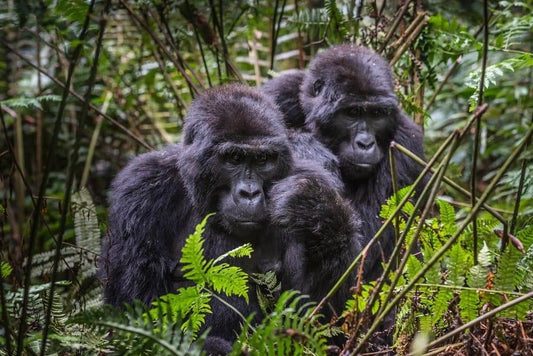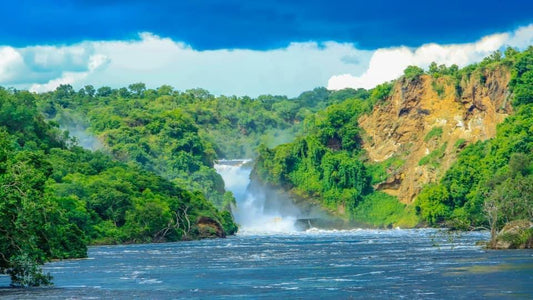Introduction
Uganda’s national parks are a paradise for nature enthusiasts and wildlife lovers alike. From the lush rainforests of Bwindi Impenetrable National Park to the sweeping savannas of Queen Elizabeth National Park, this East African gem offers a diverse array of ecosystems and breathtaking landscapes. To ensure your trip to Uganda’s national parks is a seamless and unforgettable experience, thorough preparation is key. In this comprehensive guide, we’ll provide you with detailed tips and examples to help you make the most of your adventure.
- Research and Choose the Right Parks
Before embarking on your journey, it’s crucial to research and choose the national parks that align with your interests and preferences. Uganda boasts several national parks, each offering unique experiences. For example:
- Bwindi Impenetrable National Park: If you’re interested in gorilla trekking, Bwindi is the place to be. Secure your permits well in advance, as they are limited and in high demand.
- Murchison Falls National Park: Home to the awe-inspiring Murchison Falls, this park offers stunning game drives and boat cruises for incredible wildlife sightings.
- Kibale National Park: If you’re a primate enthusiast, Kibale is famous for its chimpanzee tracking experiences.
- Obtain Necessary Permits and Documentation
To enter and explore Uganda’s national parks, you’ll need to obtain appropriate permits and documentation. Some examples include:
- Gorilla Trekking Permits: As mentioned earlier, if you plan to visit Bwindi for gorilla trekking, secure your permits in advance through the Uganda Wildlife Authority (UWA).
- Park Entry Permits: These permits grant you access to the parks. Make sure to obtain them ahead of time to avoid any last-minute hassles.
- Visa and Travel Insurance: Ensure you have a valid Ugandan visa and comprehensive travel insurance that covers medical emergencies, trip cancellations, and other unforeseen situations.
- Pack the Essentials
Packing strategically can significantly enhance your national park experience. Consider including the following items:
- Appropriate Clothing: Pack lightweight, breathable clothing for daytime activities and warmer clothing for cooler evenings. Don’t forget a rain jacket, comfortable hiking boots, and a wide-brimmed hat.
- Insect Repellent: Uganda is home to various insects, including mosquitoes. Carry effective insect repellent to protect yourself from bites and potential diseases.
- Binoculars and Camera: Capture the incredible wildlife moments and scenic landscapes with a good-quality camera and binoculars.
- First Aid Kit: Create a basic first aid kit with essentials like adhesive bandages, antiseptic wipes, pain relievers, and any personal medications.
- Plan Your Itinerary
A well-structured itinerary ensures you maximize your time and experiences in the national parks. Here’s an example itinerary for a week-long trip:
Day 1-2: Bwindi Impenetrable National Park
- Arrive in Entebbe, Uganda.
- Fly to Bwindi and settle into your accommodation.
- Day 2: Embark on a thrilling gorilla trekking experience, capturing the majestic creatures in their natural habitat.
Day 3-4: Queen Elizabeth National Park
- Drive to Queen Elizabeth National Park.
- Take a game drive to spot elephants, lions, buffaloes, and more.
- Day 4: Enjoy a boat cruise on the Kazinga Channel for close-up views of hippos, crocodiles, and a plethora of bird species.
Day 5-6: Murchison Falls National Park
- Drive to Murchison Falls National Park, stopping at Ziwa Rhino Sanctuary en route.
- Embark on game drives and a hike to the top of Murchison Falls.
- Day 6: Experience the awe-inspiring Murchison Falls up close with a boat cruise on the Nile River.
Day 7: Return to Entebbe
- Drive back to Entebbe, stopping at the equator for a photo opportunity.
- Departure from Entebbe International Airport.
- Respect Wildlife and Environment
Uganda’s national parks are delicate ecosystems home to diverse flora and fauna. Help preserve these treasures for generations to come by following these guidelines:
- Stay on Designated Paths: Stick to established trails and roads to minimize your impact on the environment.
- Keep a Safe Distance: While wildlife encounters are exhilarating, maintain a safe distance from animals and avoid disturbing their natural behaviors.
- Dispose of Waste Responsibly: Carry out all trash and waste, leaving no trace of your visit.
Conclusion
Uganda’s national parks offer an unparalleled opportunity to connect with nature and witness some of the world’s most extraordinary wildlife. By conducting thorough research, obtaining necessary permits, packing smartly, planning your itinerary, and showing respect for the environment, you’re well on your way to an unforgettable adventure. Embrace the beauty, diversity, and wonder of Uganda’s national parks while contributing to their preservation for future generations. Get ready for an experience that will stay with you long after you’ve returned home.




